Summit Therapeutics plc
(‘Summit’, the ‘Company’ or the ‘Group’)
Summit Therapeutics Reports Financial Results for the Fourth Quarter and Fiscal Year Ended 31 January 2019 and Operational Progress
- Focus on Improving Patient Outcomes for Serious Infectious Diseases
- Conference Call Today at 12:00pm GMT / 8:00am EDT
Oxford, UK, and Cambridge, MA, US, 27 March 2019 – Summit Therapeutics plc (NASDAQ: SMMT, AIM: SUMM), a leader in new mechanism antibiotic innovation, today reports its financial results for the fourth quarter and fiscal year ended 31 January 2019 and provides an update on its operational progress.
“The initiation of our global Phase 3 clinical trials of ridinilazole brings us closer to becoming a fully-integrated antibiotics company. Our capabilities span discovery through late-stage clinical development with an eye towards building a focussed commercial team,” said Mr Glyn Edwards, Chief Executive Officer of Summit. “We believe our differentiated portfolio alongside our development plans aimed at demonstrating meaningful benefits to patients, physicians and payors have the potential to counter the current trends in the antibiotic sector.
“Ridinilazole has already shown clinical superiority against the standard of care in a Phase 2 clinical trial for C. difficile infection. If we were to achieve similar results in the ongoing Phase 3 clinical trials, we believe that would provide us with a compelling data package supporting the front-line use of ridinilazole in C. difficile infection. With approximately one third of patients with CDI currently experiencing unsatisfactory outcomes with the standard of care, ridinilazole has the potential to significantly improve patient outcomes.
“Further back in our pipeline are important programmes addressing other high priority targets of gonorrhoea and the ESKAPE pathogens. The unmet need here is clear, as antimicrobial resistance is having a major impact on the ability of patients to achieve cures. Our programmes aim to provide a potential treatment option that is potent across non-resistant and resistant infections due to their new mechanisms of action. Together, our pipeline comprises new mechanism antibiotics that are being developed to be the most appropriate antibiotic for the patient in question, which would support good antibiotic stewardship and potentially reduce the threat of antimicrobial resistance.”
Programme Highlights
Antibiotics Focussed Strategy
- Summit is focussed on the development of new antibiotics that will meaningfully improve patient outcomes.
- Strategy realigned after the discontinuation of ezutromid for the treatment of Duchenne muscular dystrophy in June 2018 following the report of top-line data from the Phase 2 proof of concept clinical trial, where ezutromid missed its primary and secondary endpoints.
Ridinilazole for C. difficile Infection (‘CDI’)
- Phase 3 clinical trials of ridinilazole initiated in February 2019. The trials are expected to support the front-line use of ridinilazole for the treatment of CDI. The primary endpoint for both Phase 3 clinical trials tests for superiority of ridinilazole compared to the standard of care in the treatment of CDI. Additional endpoints include ridinilazole’s impact on reducing disease recurrence and in preserving the gut microbiome, as well as health economic outcomes measures that are intended to help support commercialisation efforts.
- $12 million option exercised by BARDA in August 2018 under existing contract to support clinical and regulatory development of ridinilazole, bringing total committed BARDA non-dilutive funding to $44 million.
- PLOS One publication highlighted microbiome-preserving activity of ridinilazole over standard of care in the CoDIFy Phase 2 clinical trial.
SMT-571 for Gonorrhoea
- SMT-571 nominated to progress into IND-enabling studies for the treatment of gonorrhoea in September 2018.
- Preclinical data presented at various conferences highlighted SMT-571 as a selective and potent antibiotic with characteristics that could support its front-line use. Further data published in Journal of Antimicrobial Chemotherapy showed SMT-571 had consistently high potency across over 200 clinically relevant strains of N. gonorrhoeae, including numerous multi- and extensively-drug resistant strains.
- Up to $4.5 million of non-dilutive funding awarded by CARB-X in July 2018 to support the preclinical and Phase 1 clinical development of SMT-571.
ESKAPE Programme
- Novel targets against ESKAPE pathogens identified using the Discuva Platform.
- Discovery further highlights the power of Summit’s proprietary Discuva Platform as a potential source of new mechanism antibiotics to treat serious infectious diseases.
Financial Highlights
- Net proceeds of $24.4 million (£19.2 million) received from the sale of American Depositary Shares in a private placement that completed in January 2019.
- Profit for the year ended 31 January 2019 of £7.5 million compared to a loss of £20.2 million for the year ended 31 January 2018.
- Cash and cash equivalents at 31 January 2019 of £26.9 million compared to £20.1 million at 31 January 2018.
Conference Call and Webcast Information
Summit will host a conference call and webcast to review the financial results for the fiscal year ended 31 January 2019 today at 12:00pm GMT / 8:00am EDT. To participate in the conference call, please dial +44 (0)844 5718 892 (UK and international participants) or +1 631 510 7495 (US local number) and use the conference confirmation code 3179239. Investors may also access a live audio webcast of the call via the investors section of the Company’s website, www.summitplc.com. A replay of the webcast will be available shortly after the presentation finishes.
About Summit Therapeutics
Summit Therapeutics is a leader in antibiotic innovation. Our new mechanism antibiotics are designed to become the new standards of care for the benefit of patients and create value for payors and healthcare providers. We are currently developing new mechanism antibiotics to treat infections caused by C. difficile, N. gonorrhoeae and ESKAPE pathogens and are using our proprietary Discuva Platform to expand our pipeline. For more information, visit www.summitplc.com and follow us on Twitter @summitplc.
This announcement contains inside information for the purposes of Article 7 of EU Regulation 596/2014 (MAR).
For more information:
| Summit | ||
| Glyn Edwards / Richard Pye (UK office) | Tel: | 44 (0)1235 443 951 |
| Michelle Avery (US office) | +1 617 225 4455 | |
| Cairn Financial Advisers LLP (Nominated Adviser) | Tel: | +44 (0)20 7213 0880 |
| Liam Murray / Tony Rawlinson | ||
| N+1 Singer (Joint Broker) | Tel: | +44 (0)20 7496 3000 |
| Aubrey Powell / Jen Boorer, Corporate Finance Tom Salvesen, Corporate Broking |
||
| Bryan Garnier & Co Limited (Joint Broker) | Tel: | +44 (0)20 7332 2500 |
| Phil Walker / Dominic Wilson
|
||
| MSL Group (US) | Tel: | +1 781 684 6557 |
| Jon Siegal | summit@mslgroup.com | |
| Consilium Strategic Communications (UK) | Tel: | +44 (0)20 3709 5700 |
| Mary-Jane Elliott / Sue Stuart / Jessica Hodgson / | summit@consilium-comms.com | |
| Lindsey Neville |
Forward Looking Statements
Any statements in this press release about the Company’s future expectations, plans and prospects, including but not limited to, statements about the potential benefits and future operation of the BARDA or CARB-X contract, including any potential future payments thereunder, the clinical and preclinical development of the Company’s product candidates, the therapeutic potential of the Company’s product candidates, the potential of the Discuva Platform, the potential commercialisation of the Company’s product candidates, the sufficiency of the Company’s cash resources, the timing of initiation, completion and availability of data from clinical trials, the potential submission of applications for marketing approvals and other statements containing the words “anticipate,” “believe,” “continue,” “could,” “estimate,” “expect,” “intend,” “may,” “plan,” “potential,” “predict,” “project,” “should,” “target,” “would,” and similar expressions, constitute forward-looking statements within the meaning of The Private Securities Litigation Reform Act of 1995. Actual results may differ materially from those indicated by such forward-looking statements as a result of various important factors, including: the ability of BARDA or CARB-X to terminate our contract for convenience at any time, the uncertainties inherent in the initiation of future clinical trials, availability and timing of data from ongoing and future clinical trials and the results of such trials, whether preliminary results from a clinical trial will be predictive of the final results of that trial or whether results of early clinical trials or preclinical studies will be indicative of the results of later clinical trials, expectations for regulatory approvals, laws and regulations affecting government contracts, availability of funding sufficient for the Company’s foreseeable and unforeseeable operating expenses and capital expenditure requirements and other factors discussed in the “Risk Factors” section of filings that the Company makes with the Securities and Exchange Commission, including the Company’s Annual Report on Form 20-F for the fiscal year ended 31 January 2018. Accordingly, readers should not place undue reliance on forward-looking statements or information. In addition, any forward-looking statements included in this press release represent the Company’s views only as of the date of this release and should not be relied upon as representing the Company’s views as of any subsequent date. The Company specifically disclaims any obligation to update any forward-looking statements included in this press release.
CHAIRMAN’S STATEMENT
Over the past year, Summit gained a new identity as an antibiotics company. Antibiotics have always been a part of our core strategy. Ridinilazole is our lead programme now in Phase 3 clinical trials, and the Discuva Platform is bolstering our pipeline. However, in the past, Summit was well known for its programme in Duchenne muscular dystrophy (‘DMD’).
While we were disappointed to announce negative results from our Phase 2 clinical trial in DMD in June 2018, they allowed us to align the entire company’s efforts towards delivering new antibiotics that meaningfully improve patient outcomes. The Phase 2 DMD trial generated a high-quality data set that enabled us to come to the definitive conclusion that ezutromid was not providing a benefit to patients. What followed was a swift, strategic pivot to become a leading antibiotics company with what we believe are the capabilities to radically change the current antibiotic paradigm through a single focus: innovation.
It is abundantly clear that the world needs new antibiotics. Too many patients with serious bacterial infections have unsatisfactory outcomes with today’s armamentarium of decades-old classes of antibiotics.
We aim to change that. Our goal is to bring innovation into the discovery, development and commercialisation of new mechanism antibiotics for serious infectious diseases.
The acquisition of our Discuva Platform in December 2017 strengthened our capabilities in antibiotics by incorporating discovery efforts into Summit. This Platform, alongside our team of scientists, has the potential to disrupt the field of antibiotic discovery. Over the past year, we have added three new programmes to our pipeline, all of which originated from the Discuva Platform, an encouraging early sign of how prolific we believe our proprietary platform can be.
Two of the programmes we added to our pipeline are for the treatment of gonorrhoea. We are entering a world of super gonorrhoea, infections that are extensively drug resistant. One such case of super gonorrhoea arrived in the UK last year, with further cases reported since. Neisseria gonorrhoeae is particularly clever when it comes to evading antibiotics. It has consistently gained resistance to the antibiotics used to treat it and keeps this resistance over time. The only recommended treatment is failing in many cases, and there are no other recommended drugs available to treat gonorrhoea. In order to gain the upper hand against N. gonorrhoeae, society desperately needs new mechanism antibiotics.
Through the Discuva Platform, we have identified two new targets for N. gonorrhoeae. Our focus in gonorrhoea is on our lead clinical candidate, SMT-571, which was nominated in September 2018. In preclinical studies, SMT-571 has demonstrated potent activity across hundreds of clinically relevant N. gonorrhoeae strains, including numerous multi- and extensively-drug resistant strains. Our opportunity in gonorrhoea is to be the next treatment option recommended for the 78 million estimated annual cases worldwide.
Our third programme added in 2018 addresses serious hospital-acquired infections caused by the ESKAPE pathogens. These infections are plagued by resistance, which result in poor patient outcomes and substantial medical costs. As is the case with all of our programmes, we believe that developing new mechanism antibiotics that are designed to target a specific infection or pathogen could result in significantly improved patient outcomes and reduced healthcare costs. We look forward to providing an update on this programme in 2019.
Our late-stage antibiotic ridinilazole for the treatment of C. difficile infection has made a strong start to 2019 following the progress made in our manufacturing processes during 2018. We dosed the first patient in our much-anticipated Phase 3 clinical trials in February. These Phase 3 clinical trials of ridinilazole truly exemplify our innovation in development and planning for commercial success.
Our goal is to send a clear message to physicians and payors that ridinilazole is a superior product clinically and economically and should be used as a front-line treatment of CDI. We have designed the Phase 3 clinical trials to support this goal. The primary endpoint for the Phase 3 clinical trials aims to show superiority of ridinilazole over the standard of care, vancomycin, in sustained clinical response. In other words, the trials are designed to provide evidence that patients are being cured and remaining free of CDI, something which doesn’t happen in approximately one-third of CDI patients treated with vancomycin. There are over a million cases of CDI in the US and Europe every year, representing unacceptably high number of patients who are not receiving a satisfactory clinical outcome.
Our Phase 3 clinical programme also is designed to support commercialisation through the inclusion of health economic outcomes measures. Unsatisfactory patient outcomes lead to higher healthcare costs. If treatment with ridinilazole improves patient outcomes, it could reduce those healthcare costs and potentially support its uptake by healthcare providers.
We believe the clinical and economic outcomes will both play a key role in ensuring ridinilazole’s potential commercial success. Superior clinical and positive health economic outcomes could provide healthcare providers with the information to encourage use, guideline writers to change their recommendations and payors to provide reimbursement. We are bold in this endeavour, but the positive results from our Phase 2 clinical trial of ridinilazole and lessons from past antibiotic launches provide us with confidence that this is the right path to achieve success.
Our differentiated approach to antibiotic development continues to be endorsed by third parties. In 2018, BARDA exercised one of its options in our award of up to $62 million for the clinical and regulatory development of ridinilazole. The total committed capital from BARDA is now $44 million. Also in 2018, we received a grant worth up to $4.5 million from the public-private partnership, CARB-X, to support the development of SMT-571 through the end of a Phase 1 clinical trial. These awards are further endorsement of Summit’s strategy and innovation in new mechanism antibiotics. In addition to these non-dilutive capital sources, we believe our singular focus as an antibiotics company and clear mission to bring new mechanism antibiotics to patients are increasingly resonating with the investment community, including new and existing shareholders.
Our people are central to being successful in antibiotic research. We have a team with deep expertise and experience in infectious diseases from conducting early stage research to running global clinical trials and successfully launching new antibiotics.
Our ambitious goals in the discovery of new mechanism antibiotics through to commercialisation of these products ourselves in key territories rely on having the support of our shareholders and the right team in place to do so. We thank our shareholders for supporting us in this vision and our employees, who are dedicated to bringing potentially life-saving treatments to patients. Together, we are redefining antibiotic development and bringing much needed innovation to this crucial area of medicine.
Frank Armstrong, FRCPE, FFPM
Non-Executive Chairman
OPERATIONAL REVIEW
Summit is a leader in antibiotic innovation. The Company is developing new antibiotics with the potential to significantly improve patient outcomes in serious infectious diseases. Summit aims to become a fully integrated antibiotics company. Summit’s lead antibiotic candidate is ridinilazole, a precision antibiotic in Phase 3 clinical development for front-line treatment of C. difficile infection (‘CDI’). In addition, the Company is advancing SMT-571 for the treatment of gonorrhoea and a series of new mechanism antibiotics against hospital-acquired infections caused by the ESKAPE pathogens.
Summit’s antibiotic research and development activities have and continue to receive significant funding support from third party organisations including BARDA, CARB-X, the Wellcome Trust and Innovate UK.
Strategy
Since the turn of the century, few new mechanism antibiotics have entered the market. Overuse or misuse of current antibiotics is fuelling antimicrobial resistance (‘AMR’), and without the introduction of new antibiotics, the world is headed for an era where once easily curable infections could become global health crises. According to the US Centers for Disease Control and Prevention (‘CDC’), at least 2 million people are infected with antibiotic resistant bacteria in the US every year, and of those, at least 23,000 people die as a result. The 2016 O’ Neill Review on Antimicrobial Resistance stated that by 2050, an estimated 10 million lives a year are at risk worldwide due to rise of antibiotic resistant infections.
Although the need for new antibiotics is apparent, the companies developing antibiotics are not highly valued in the market – those antibiotics which are commercially available are not selling enough to sustain the respective developer, and investors are reluctant to invest their money where returns are likely limited.
Summit believes part of the solution to this problem is innovation. It has identified where it believes innovation could lead to success. Summit aims to develop new antibiotics that can show significant advantages over the current standards of care and offer compelling value propositions to payors. Summit is doing so through three key areas: discovery of new science, development programmes aimed at showing differentiation and commercialisation plans aimed at demonstrating the value of its antibiotic candidates. Our approach is about ensuring the patient receives the right drug for the right infection.
Discovery
Summit’s discovery and development efforts focus on antibiotics which have a new mechanism of action. One potential advantage to this approach is all strains of that bacteria could be equally susceptible to the new mechanism antibiotic, including those resistant to currently marketed antibiotics. In addition, resistance to the new mechanism antibiotic may develop at a slower rate than it does to antibiotics that are related to, or part of, an already marketed antibiotic class.
Summit uses its Discuva Platform to identify new bacterial targets and optimise new antibiotics against these targets. As historical antibiotic discovery has focussed on broad-spectrum antibiotics, many of the new mechanisms being discovered are more targeted to specific bacteria. This allows Summit to design its programmes to be specific to an infectious disease or pathogen, which could have the advantage of sparing good bacteria that can help to ward off disease and further improve patient outcomes.
Development
Improving patient outcomes is central to Summit in the development of its new mechanism antibiotics. Summit adopts a creative approach to its research and development activities, for example by developing clinical trials that show wider societal value of its new antibiotics. This could be by inclusion of clinical or economic metrics in clinical trials that support the use of its compounds over the current standard of care for the patient in question. This approach could target the entire patient population or more niched patient populations that still afford Summit a commercial opportunity. The Company believes that demonstrating improved patient outcomes in clinical trials could result in favourable drug labels upon potential regulatory approvals and encourage adoption of the new mechanism antibiotic by the medical community.
Commercialisation
While having the right drug label is part of the solution in offering compelling value propositions to payors, Summit also believes in the need to deliver economic data at launch that show potential cost-saving advantages of using a new drug over the current standard of care. The Company believes having both the appropriate drug label and health economic data could command fair pricing that make antibiotic research and development a more attractive proposition.
Through these collective scientific, development and economic efforts, Summit believes it can position its new mechanism antibiotics for commercial success and bring urgently needed medicines to patients. In addition, the Company’s strategy favours the use of targeted antibiotics over broad-spectrum antibiotics, a key element of good antibiotic stewardship in the drive to reduce AMR and preserve use of important broad-spectrum antibiotics for serious idiopathic infections.
Ridinilazole: A Potential Front-Line Antibiotic to Combat C. difficile Infection
Summit’s strategy is exemplified by ridinilazole. Ridinilazole is a new mechanism, precision antibiotic in Phase 3 development for front-line treatment of CDI.
There are over one million cases of CDI in the US and Europe per year, resulting in about 29,000 deaths annually in the US alone. The mainstay CDI treatment is the broad-spectrum antibiotic, vancomycin. Initial treatment with vancomycin fails in approximately one-third of patients, driven by a high rate of patients having a recurrence of the disease within 30 days after treatment. This recurrence is caused by substantial disruption to the gut microbiome driven by the use of broad-spectrum antibiotics. Each recurrent episode of CDI is typically more severe than the prior episode and carries an increased risk of mortality. As such, reducing disease recurrence is the key clinical issue facing CDI.
Ridinilazole is designed to selectively target C. difficile bacteria at the site of infection without causing collateral damage to the gut microbiome, and therefore has the potential to be a front-line therapy that treats not only the initial CDI infection, but importantly reduces the rate of CDI recurrence. In August 2018, data were published showing patients treated with ridinilazole in the Company’s Phase 2 proof of concept clinical trial had significantly preserved gut microbiomes versus the standard of care vancomycin. In that clinical trial, ridinilazole demonstrated clinical and statistical superiority over vancomycin in sustained clinical response (‘SCR’), driven by its preservation of patients’ microbiomes that reduced CDI recurrence by 59%.
Ridinilazole’s Phase 3 clinical trials have been designed to replicate the positive results from the Phase 2 clinical trial. SCR is the primary endpoint that measures cure of the initial infection and whether patients have disease recurrence 30 days after completing treatment. The Phase 3 programme comprises two global, randomised, double-blind, active controlled clinical trials called Ri-CoDIFy 1 and Ri-CoDIFy 2. The trials are running concurrently with each expected to enrol approximately 680 patients at sites in North America, Latin America, Europe, Australia and Asia. Half of the patients in the trials receive ridinilazole, and the other half receive vancomycin. The Phase 3 trials also include various health economic outcome measures, such as hospital readmission rates and length of hospital stay, to help support the commercialisation of ridinilazole, if approved. Dosing of the first patient in the clinical trials began in February 2019, and top-line data are expected to be reported in the second half of 2021.
The ongoing clinical and regulatory development of ridinilazole is being supported by a contract with the US Biomedical Advanced Research and Development Authority (‘BARDA’) that potentially provides up to $62 million in non-dilutive funding. To date, total committed BARDA funding under this contract is $44 million, including a $12 million option that was exercised by BARDA in August 2018 and which will be drawn down to specifically support drug manufacturing activities required for the submission of a new drug application to the US Food and Drug Administration and other regulatory activities.
Summit expects to commercialise ridinilazole in the US with a targeted salesforce, if approved. The Company is evaluating its options to maximise the value of ridinilazole in other territories outside of certain Latin American and Caribbean countries, where it has a commercial agreement with Eurofarma Laboratórios SA (‘Eurofarma’).
SMT-571: Preclinical Antibiotic for the Treatment of Gonorrhoea
Gonorrhoea is recognised as an urgent bacterial threat by the CDC and designated as a high priority pathogen by the World Health Organization (‘WHO’). The WHO estimates there are approximately 78 million new cases of gonorrhoea globally each year. There is now only one treatment option recommended by the CDC for the treatment of gonorrhoea, a combination of two generic antibiotics. Resistance to this treatment option is growing, and alarmingly there are currently no other recommended antibiotics available.
Summit is developing SMT-571 as a new antibiotic for the treatment of gonorrhoea. Working by a novel mechanism of action, SMT-571 has shown high potency for a range of clinically relevant N. gonorrhoeae strains in in vitro studies, including numerous multi- and extensively-drug resistant strains. In September 2018, SMT-571 was nominated as a preclinical candidate for progression into investigational new drug (‘IND’)-enabling studies. Should SMT-571 successfully complete these IND-enabling studies, Summit expects to initiate a Phase 1 clinical trial in the second half of 2019.
In July 2018, Summit was awarded up to $4.5 million in non-dilutive funding from CARB-X, a public-private partnership dedicated to accelerating antibacterial research and development to address the rising global threat of drug-resistant bacteria. Summit will receive an initial $2.0 million in funding with the remaining $2.5 million split into two option segments, which may be exercised by CARB-X upon the achievement of certain development milestones. The full funding would support the development of SMT-571 through the completion of a Phase 1 clinical trial.
Discuva Platform: An Engine to Generate New Mechanism Antibiotics
The development of Summit’s pipeline of new mechanism antibiotics is underpinned by its proprietary Discuva Platform. From discovery through the selection of optimised clinical candidates, Summit believes the Discuva Platform has the potential to deliver antibiotics with new mechanisms of action and a low likelihood of resistance development combined with a targeted spectrum of activity. The Discuva Platform utilises proprietary libraries of a wide range of bacteria that can be used to generate new mechanism antibiotics against bacteria that are classified as urgent or high-risk threats by the CDC and WHO.
ESKAPE Programme
In September 2018, a new discovery programme targeting ESKAPE pathogens was unveiled. The ESKAPE pathogens (Enterococcus faecium, Staphylococcus aureus, Klebsiella pneumoniae, Acinetobacter baumannii, Pseudomonas aeruginosa, Enterobacter spp.) are a group of bacteria that represent a leading cause of hospital acquired infections around the world and are subject to increasing rates of resistance to existing antibiotic classes. Summit expects to provide an update on its first series of antibiotics from this programme in 2019.
Second Novel Gonorrhoea Target
In June 2018, identification of a second novel target to kill N. gonorrhoeae distinct from the one targeted by SMT-571 was reported, along with the discovery of a new series of compounds that have activity against this target. The development of this second series of compounds has been supported in part by a grant from Innovate UK. The development of this programme is currently on hold as the Company pursues its lead candidate, SMT-571, for the treatment of gonorrhoea.
Roche Collaboration
Prior to Summit’s acquisition of Discuva Limited, Roche and Discuva entered into a collaboration using the Discuva Platform for the discovery and development of new antibiotic compounds in 2014. The joint research element of the collaboration concluded in early 2018, and Roche is solely responsible for continuing development of any compound that was identified under the collaboration, with Summit eligible to receive from Roche milestones and royalty payments based on the successful development and commercialisation of any such compound.
Duchenne Muscular Dystrophy (‘DMD’)
In June 2018, Summit discontinued the development of ezutromid, the Company’s lead utrophin modulator for the treatment of DMD. This decision was taken following the reporting in June 2018 that the Phase 2 proof of concept clinical trial in patients with DMD did not meet its primary or secondary endpoints. The Company believes the Phase 2 trial provided comprehensive data on a variety of endpoints that would have enabled the detection of any clinical benefit of ezutromid if it existed. These data have the potential to be helpful for other researchers and companies in the DMD community, and therefore, Summit has submitted anonymised, individual data to several DMD research consortia. Summit sincerely thanks the participants of that Phase 2 clinical trial for their contributions in furthering DMD research for the entire DMD community. Summit has substantively completed close-out activities related to ezutromid.
Operational and Board Changes
As a consequence of the discontinuation of ezutromid, the Company reduced its headcount by 17 employees, or approximately 23% of total headcount. Separately, Erik Ostrowski stepped down as Chief Financial Officer to pursue other opportunities at the end of December 2018. The Company plans to appoint a new Chief Financial Officer in due course.
There were also changes to the Board of Directors as part of the Company’s business re-alignment to focus on the development of new mechanism antibiotics with Dr Barry Price and Professor Stephen Davies stepping down as Non-Executive Directors in September 2018.
FINANCIAL REVIEW
Revenue
Revenue was £43.0 million for the year ended 31 January 2019 compared to £12.4 million for the year ended 31 January 2018.
Revenues in each of these periods relates primarily to the Group’s licence and collaboration agreement with Sarepta Therapeutics Inc (‘Sarepta’). The increase in revenues was driven by the recognition of all remaining deferred revenue related to the Sarepta agreement following the Group’s decision to discontinue development of ezutromid in June 2018. This recognition of deferred revenues did not impact the Group’s cash flows. Revenue recognised during the year ended 31 January 2019 relating to the Sarepta agreement amounted to £42.3 million. This included £6.3 million of cost-share income which the Group continues to receive.
The Group also recognised £0.5 million of revenue during the year ended 31 January 2019 relating to the receipt of a $2.5 million (£1.9 million) upfront payment in respect of the licence and commercialisation agreement signed with Eurofarma in December 2017 and £0.2 million of revenue pursuant to a research collaboration agreement between the Group’s subsidiary Discuva Limited and F. Hoffmann – La Roche Limited (‘Roche’). The research services period under the Roche agreement ended in February 2018.
See Note 1 ‘Basis of Accounting – Adoption of IFRS 15 Revenue from contracts with customers’ for details of the impact of the initial adoption of IFRS 15.
Other Operating Income
Other operating income increased by £12.5 million to £15.2 million for the year ended 31 January 2019 from £2.7 million for the year ended 31 January 2018. This increase resulted primarily from the recognition of £13.1 million during the year ended 31 January 2019, as compared to £1.8 million during the year ended 31 January 2018 from the Group’s funding contract with BARDA for the development of ridinilazole for the treatment of CDI.
The Group also recognised other operating income of £1.2 million during the year ended 31 January 2019 related to the Group’s funding arrangements with CARB-X and Innovate UK awards for its antibiotic pipeline activities. In addition, £0.3 million was recognised in respect of UK Research and Development Expenditure Credits.
During the year ended 31 January 2019, the Group also recognised £0.5 million of other operating income resulting from the release of the Group’s financial liabilities on funding arrangements relating to DMD-related US not for profit organisations because of the discontinuation of ezutromid’s development.
Operating Expenses
Research and Development Expenses
Research and development expenses increased by £10.2 million to £39.2 million for the year ended 31 January 2019 from £29.0 million for the year ended 31 January 2018. This was due to increased expenditure related to the Group’s CDI programme, antibiotic pipeline development activities, and research and development related staffing and facilities costs, offset by decreased expenditure related to the discontinued DMD programme.
In more detail, investment into the CDI programme increased by £12.3 million to £17.9 million for the year ended 31 January 2019 from £5.6 million for the year ended 31 January 2018. This increase primarily related to clinical preparatory activities and manufacturing activities related to the Phase 3 clinical trials of ridinilazole that commenced in February 2019. Investment in the Group’s antibiotic pipeline development activities was £1.9 million for the year ended 31 January 2019 compared to £0.1 million for the year ended 31 January 2018, which reflects activities post the completion of the acquisition of Discuva Limited that included the proprietary Discuva Platform in December 2017.
Expenses related to the DMD programme decreased by £6.5 million to £9.5 million for the year ended 31 January 2019 from £16.0 million for the year ended 31 January 2018. This was driven by the decision to discontinue development of ezutromid in June 2018, which resulted in a decrease in the clinical and manufacturing costs, as well as a reduction in next and future generation utrophin modulation programme research activities.
Other research and development expenses increased by £2.5 million to £9.8 million during the year ended 31 January 2019 as compared to £7.3 million during the year ended 31 January 2018, which was due to an increase in staff and facilities costs related to the CDI and antibiotic development teams, a non-cash charge related to the acceleration of share-based payment expenses resulting from the surrender of share option awards and a non-cash charge for amortisation of the proprietary Discuva Platform.
General and Administration Expenses
General and administration expenses increased by £0.3 million to £12.3 million for the year ended 31 January 2019 from £12.0 million for the year ended 31 January 2018. This increase was primarily due to a non-cash charge for the acceleration of share-based payment expenses resulting from the surrender of share option awards, a loss on recognition of contingent consideration payable relating to the acquisition of Discuva Limited, offset by a net positive movement in exchange rate variances.
Impairment of Goodwill and Intangible Assets
As a result of discontinuing the development of ezutromid, the Group recognised an impairment charge during the year ended 31 January 2019 of £4.0 million relating to the utrophin programme intangible asset and goodwill associated with the acquisition of MuOx Limited.
Finance Income
Finance income was £2.8 million for the year ended 31 January 2019. This related primarily to the remeasurement of the Group’s financial liabilities on funding arrangements relating to DMD-related US not for profit organisations following the discontinuation of the development of ezutromid in June 2018. Finance income was £3.1 million for the year ended 31 January 2018. This related primarily to the derecognition of the Group’s financial liability on the Wellcome Trust funding arrangement, after the Group and the Wellcome Trust entered into a revenue sharing agreement in October 2017.
Finance Costs
Finance costs recognised during the year ended 31 January 2019 relate to the unwinding of the discounts associated with financial liabilities on funding arrangements and provisions. Finance costs were £0.4 million for the year ended 31 January 2019 compared to £1.2 million for the year ended 31 January 2018. This decrease was due to a reduction in the unwinding of the discount following the remeasurement of the financial liabilities on funding arrangements relating to DMD-related US not for profit organisations to £nil following the discontinuation of the development of ezutromid in June 2018.
Income tax
The income tax credit for the year ended 31 January 2019 was £2.5 million as compared to £3.8 million for the year ended 31 January 2018. This change in income tax credit was driven by a reduction in the Group’s accrued UK research and development tax credit, as there are insufficient losses to surrender for the year ended 31 January 2019, due to the recognition of all remaining deferred revenue related to the Sarepta agreement following the Group’s decision to discontinue the development of ezutromid in June 2018, to be eligible to receive a full research and development tax credit. This movement was offset by the release of deferred tax liabilities associated with the impairment of goodwill and amortisation of intangible assets.
The Group’s net corporation tax receivable includes research and development tax credits receivable on qualifying expenditure in respect of previous financial years. The Group anticipates that it will receive these research and development tax credit payments in the first half of 2019, after receiving confirmation of intention to pay from the HM Revenue & Customs, or HMRC, in March 2019.
Profit / (Loss)
Profit before income tax was £5.0 million for the year ended 31 January 2019 compared to a loss before income tax of £24.0 million for the year ended 31 January 2018. The profit recorded for the year ended 31 January 2019 was due to the recognition of all remaining deferred revenue related to the Sarepta agreement following the Group’s decision to discontinue the development of ezutromid in June 2018. This recognition of deferred revenues did not impact the Group’s cash flows.
Net profit was £7.5 million for the year ended 31 January 2019 with a basic and diluted profit per share of 9 pence compared to a net loss of £20.2 million for the year ended 31 January 2018 with a basic and diluted loss per share of 31 pence.
Cash Flows
The Group had a net cash inflow of £6.3 million for the year ended 31 January 2019 compared to a net cash outflow of £6.0 million for the year ended 31 January 2018.
Operating Activities
Net cash used in operating activities for the year ended 31 January 2019 was £26.8 million compared to £14.7 million for the year ended 31 January 2018. This increase of £12.1 million was primarily driven by an increase in operating costs of £6.4 million, a net reduction in cash received from licensing agreements and funding arrangements of £2.5 million and a negative movement in taxation cash flows of £3.2 million due to timing of receipt of the Group’s research and development tax credits receivable on qualifying expenditure in respect of previous financial years.
Investing Activities
Net cash used in investing activities for the year ended 31 January 2019 was £0.3 million compared to £5.2 million for the year ended 31 January 2018. Net cash outflow from investing activities for the year ended 31 January 2019 represents contingent consideration paid and amounts paid to acquire property, plant and equipment and intangible assets, net of bank interest received on cash deposits. Net cash outflow from investing activities for the year ended 31 January 2018 included £4.8 million used in the acquisition of Discuva Limited in December 2017, net of cash acquired as part of the transaction, and a further £0.5 million used to acquire property, plant and equipment and intangible assets mainly in relation to the relocation of our UK office in Oxford.
Financing Activities
Net cash generated from financing activities for the year ended 31 January 2019 was £33.4 million. This includes £14.1 million of net proceeds received following the Group’s equity placing on the AIM market of the London Stock Exchange in March 2018, £19.2 million of net proceeds received following the Group’s private placement of ADSs in the United States in January 2019, and £0.1 million received following the exercise of Restricted Stock Units and share options. Net cash generated from financing activities for the year ended 31 January 2018 of £13.9 million included £13.5 million of net proceeds received following the Group’s underwritten public equity offering in September 2017, and £0.4 million received following the exercise of warrants and share options.
Financial Position
As at 31 January 2019, total cash and cash equivalents held were £26.9 million (31 January 2018: £20.1 million).
Headcount
Headcount for the Group as at 31 January 2019 was 61 compared to 76 as at 31 January 2018, with this reflecting implementation of cost-cutting measures following the decision to discontinue ezutromid development in June 2018.
Share Capital
On 29 March 2018, the Company completed an equity placing on the AIM market of the London Stock Exchange, issuing 8,333,333 new ordinary shares at a price of 180 pence per share. Total gross proceeds of £15.0 million were raised and directly attributable transaction costs of £0.9 million were incurred and accounted for as a deduction from equity.
On 9 January 2019, the Company completed a private placement of 15,625,000 American Depository Shares (‘ADS’) at a price of $1.60 per ADS. Each ADS represents five ordinary shares of one penny nominal value each in the capital of the Company, meaning 78,125,000 new ordinary shares were issued. Total gross proceeds of $25.0 million (£19.6 million) were raised and directly attributable transaction costs of £0.4 million were incurred.
During the year 367,924 Restricted Stock Units and share options were exercised raising net proceeds of £0.1 million.
FINANCIAL STATEMENTS
Consolidated Statement of Comprehensive Income (audited)
For the year ended 31 January 2019
| Year ended 31 January 2019 |
Year ended 31 January 2019 |
Year ended 31 January 2018 |
||||||||
| (Adjusted*) | ||||||||||
| Note | $000s | £000s | £000s | |||||||
| Revenue | 56,496 | 43,012 | 12,360 | |||||||
| Other operating income | 19,907 | 15,156 | 2,725 | |||||||
| Operating expenses | ||||||||||
| Research and development | (51,455 | ) | (39,174 | ) | (28,970 | ) | ||||
| General and administration | (16,211 | ) | (12,342 | ) | (11,999 | ) | ||||
| Impairment of goodwill and intangible assets | (5,234 | ) | (3,985 | ) | — | |||||
| Total operating expenses | (72,900 | ) | (55,501 | ) | (40,969 | ) | ||||
| Operating profit / (loss) | 3,503 | 2,667 | (25,884 | ) | ||||||
| Finance income | 3,662 | 2,788 | 3,096 | |||||||
| Finance costs | (557 | ) | (424 | ) | (1,164 | ) | ||||
| Profit / (loss) before income tax | 6,608 | 5,031 | (23,952 | ) | ||||||
| Income tax | 3,278 | 2,496 | 3,762 | |||||||
| Profit / (loss) for the year | 9,886 | 7,527 | (20,190 | ) | ||||||
| Other comprehensive income / (loss) | ||||||||||
| Items that may be reclassified subsequently to profit or loss | ||||||||||
| Exchange differences on translating foreign operations | 25 | 19 | (13 | ) | ||||||
| Total comprehensive profit / (loss) for the year | 9,911 | 7,546 | (20,203 | ) | ||||||
| Basic and diluted earnings / (loss) per ordinary share from operations | 2 | 12 cents | 9 pence | (31) pence | ||||||
* See Note 1 – ‘Basis of Accounting – Adoption of IFRS 15 Revenue from contracts with customers’.
Consolidated Statement of Comprehensive Income (audited)
For the three months ended 31 January 2019
|
|
Three months ended 31 January 2019 |
Three months ended 31 January 2019 |
Three months ended 31 January 2018 |
|||||||
| (Adjusted*) | ||||||||||
| Note | $000s | £000s | £000s | |||||||
| Revenue | 663 | 505 | 3,248 | |||||||
| Other operating income | 8,113 | 6,177 | 1,151 | |||||||
| Operating expenses | ||||||||||
| Research and development | (12,531 | ) | (9,540 | ) | (9,902 | ) | ||||
| General and administration | (3,969 | ) | (3,022 | ) | (5,096 | ) | ||||
| Total operating expenses | (16,500 | ) | (12,562 | ) | (14,998 | ) | ||||
| Operating loss | (7,724 | ) | (5,880 | ) | (10,599 | ) | ||||
| Finance income | 3 | 2 | 9 | |||||||
| Finance costs | (62 | ) | (47 | ) | (496 | ) | ||||
| Loss before income tax | (7,783 | ) | (5,925 | ) | (11,086 | ) | ||||
| Income tax | 1,006 | 766 | (197 | ) | ||||||
| Loss for the period | (6,777 | ) | (5,159 | ) | (11,283 | ) | ||||
| Other comprehensive losses | ||||||||||
| Items that may be reclassified subsequently to profit or loss | ||||||||||
| Exchange differences on translating foreign operations | (8 | ) | (6 | ) | (8 | ) | ||||
| Total comprehensive loss for the period | (6,785 | ) | (5,165 | ) | (11,291 | ) | ||||
| Basic and diluted loss per ordinary share from operations | 2 | (7) cents | (5) pence | (16) pence | ||||||
* See Note 1 – ‘Basis of Accounting – Adoption of IFRS 15 Revenue from contracts with customers’
Consolidated Statement of Financial Position (audited)
As at 31 January 2019
| 31 January 2019 | 31 January 2019 | 31 January 2018 | ||||||||
| (Adjusted*) | ||||||||||
| Note | $000s | £000s | £000s | |||||||
| ASSETS | ||||||||||
| Non-current assets | ||||||||||
| Goodwill | 2,383 | 1,814 | 2,478 | |||||||
| Intangible assets | 13,928 | 10,604 | 14,785 | |||||||
| Property, plant and equipment | 809 | 616 | 809 | |||||||
| 17,120 | 13,034 | 18,072 | ||||||||
| Current assets | ||||||||||
| Trade and other receivables | 17,794 | 13,547 | 11,134 | |||||||
| Current tax receivable | 8,312 | 6,328 | 4,654 | |||||||
| Cash and cash equivalents | 35,278 | 26,858 | 20,102 | |||||||
| 61,384 | 46,733 | 35,890 | ||||||||
| Total assets | 78,504 | 59,767 | 53,962 | |||||||
| LIABILITIES | ||||||||||
| Non-current liabilities | ||||||||||
| Deferred revenue | (1,092 | ) | (831 | ) | (27,270 | ) | ||||
| Financial liabilities on funding arrangements | — | — | (3,090 | ) | ||||||
| Provisions for other liabilities and charges | (2,431 | ) | (1,851 | ) | (1,641 | ) | ||||
| Deferred tax liability | (2,200 | ) | (1,675 | ) | (2,379 | ) | ||||
| (5,723 | ) | (4,357 | ) | (34,380 | ) | |||||
| Current liabilities | ||||||||||
| Trade and other payables | (11,643 | ) | (8,865 | ) | (8,932 | ) | ||||
| Deferred revenue and income | (4,432 | ) | (3,374 | ) | (13,834 | ) | ||||
| Contingent consideration | (826 | ) | (629 | ) | — | |||||
| (16,901 | ) | (12,868 | ) | (22,766 | ) | |||||
| Total liabilities | (22,624 | ) | (17,225 | ) | (57,146 | ) | ||||
| Net assets / (liabilities) | 55,880 | 42,542 | (3,184 | ) | ||||||
| EQUITY | ||||||||||
| Share capital | 2,107 | 1,604 | 736 | |||||||
| Share premium account | 121,901 | 92,806 | 60,237 | |||||||
| Share-based payment reserve | 1,508 | 1,148 | 6,743 | |||||||
| Merger reserve | 3,976 | 3,027 | 3,027 | |||||||
| Special reserve | 26,261 | 19,993 | 19,993 | |||||||
| Currency translation reserve | 74 | 56 | 37 | |||||||
| Accumulated losses reserve | (99,947 | ) | (76,092 | ) | (93,957 | ) | ||||
| Total equity / (deficit) | 55,880 | 42,542 | (3,184 | ) | ||||||
* See Note 1 – ‘Basis of Accounting – Adoption of IFRS 15 Revenue from contracts with customers’.
Consolidated Statement of Cash flows (audited)
For the year ended 31 January 2019
| Year ended 31 January 2019 |
Year ended 31 January 2019 |
Year ended 31 January 2018 |
|||||||
| (Adjusted*) | |||||||||
| $000s | £000s | £000s | |||||||
| Cash flows from operating activities | |||||||||
| Profit / (loss) before income tax | 6,608 | 5,031 | (23,952 | ) | |||||
| 6,608 | 5,031 | (23,952 | ) | ||||||
| Adjusted for: | |||||||||
| Gain on remeasurement or derecognition of financial liabilities on funding arrangements | (708 | ) | (539 | ) | (908 | ) | |||
| Loss on recognition of contingent consideration payable | 990 | 754 | — | ||||||
| Finance income | (3,662 | ) | (2,788 | ) | (3,096 | ) | |||
| Finance costs | 557 | 424 | 1,164 | ||||||
| Foreign exchange (gain) / loss | (536 | ) | (408 | ) | 1,960 | ||||
| Depreciation | 406 | 309 | 140 | ||||||
| Amortisation of intangible fixed assets | 1,089 | 829 | 106 | ||||||
| Loss on disposal of assets | 57 | 43 | 40 | ||||||
| Movement in provisions | 25 | 19 | (60 | ) | |||||
| Research and development expenditure credit | (437 | ) | (333 | ) | (23 | ) | |||
| Impairment of goodwill and intangible assets | 5,234 | 3,985 | — | ||||||
| Share-based payment | 6,230 | 4,743 | 1,607 | ||||||
| Adjusted profit / (loss) from operations before changes in working capital | 15,853 | 12,069 | (23,022 | ) | |||||
| Increase in trade and other receivables | (2,913 | ) | (2,218 | ) | (8,993 | ) | |||
| (Decrease) / increase in deferred revenue | (48,466 | ) | (36,898 | ) | 10,577 | ||||
| Increase in trade and other payables | 122 | 93 | 3,375 | ||||||
| Cash used by operations | (35,404 | ) | (26,954 | ) | (18,063 | ) | |||
| Taxation received | 209 | 159 | 3,374 | ||||||
| Net cash used by operating activities | (35,195 | ) | (26,795 | ) | (14,689 | ) | |||
| Investing activities | |||||||||
| Acquisition of subsidiaries net of cash acquired | — | — | (4,775 | ) | |||||
| Contingent consideration paid | (252 | ) | (192 | ) | — | ||||
| Purchase of property, plant and equipment | (156 | ) | (119 | ) | (360 | ) | |||
| Purchase of intangible assets | (8 | ) | (6 | ) | (119 | ) | |||
| Interest received | 5 | 4 | 12 | ||||||
| Net cash used in investing activities | (411 | ) | (313 | ) | (5,242 | ) | |||
| Financing activities | |||||||||
| Proceeds from issue of share capital | 45,510 | 34,648 | 14,931 | ||||||
| Transaction costs on share capital issued | (1,725 | ) | (1,313 | ) | (1,428 | ) | |||
| Proceeds from exercise of warrants | — | — | 10 | ||||||
| Proceeds from exercise of share options | 134 | 102 | 392 | ||||||
| Net cash generated from financing activities | 43,919 | 33,437 | 13,905 | ||||||
| Increase / (decrease) in cash and cash equivalents | 8,313 | 6,329 | (6,026 | ) | |||||
| Effect of exchange rates in cash and cash equivalents | 561 | 427 | (1,934 | ) | |||||
| Cash and cash equivalents at beginning of the year | 26,404 | 20,102 | 28,062 | ||||||
| Cash and cash equivalents at end of the year | 35,278 | 26,858 | 20,102 | ||||||
* See Note 1 – ‘Basis of Accounting – Adoption of IFRS 15 Revenue from contracts with customers’.
Consolidated Statement of Changes in Equity (audited)
Year ended 31 January 2019
| Group | Share capital £000s |
Share premium account £000s |
Share-based payment reserve £000s |
Merger reserve £000s |
Special reserve £000s |
Currency translation reserve £000s |
Accumulated losses reserve £000s |
Total £000s |
|||||||||||||||||
| At 1 February 2018 (as previously reported) | 736 | 60,237 | 6,743 | 3,027 | 19,993 | 37 | (80,898 | ) | 9,875 | ||||||||||||||||
| Change in accounting policy (full retrospective application IFRS 15) | — | — | — | — | — | — | (13,059 | ) | (13,059 | ) | |||||||||||||||
| At 1 February 2018 (Adjusted*) | 736 | 60,237 | 6,743 | 3,027 | 19,993 | 37 | (93,957 | ) | (3,184 | ) | |||||||||||||||
| Profit for the year | — | — | — | — | — | — | 7,527 | 7,527 | |||||||||||||||||
| Currency translation adjustment | — | — | — | — | — | 19 | 19 | ||||||||||||||||||
| Total comprehensive profit for the year | — | — | — | — | — | 19 | 7,527 | 7,546 | |||||||||||||||||
| New share capital issued | 864 | 33,784 | — | — | — | — | — | 34,648 | |||||||||||||||||
| Transaction costs on share capital issued | — | (1,313 | ) | — | — | — | — | — | (1,313 | ) | |||||||||||||||
| Share options exercised | 4 | 98 | — | — | — | — | — | 102 | |||||||||||||||||
| Share-based payment | — | — | 4,743 | — | — | — | — | 4,743 | |||||||||||||||||
| Transfer | — | — | (10,338 | ) | — | — | — | 10,338 | — | ||||||||||||||||
| At 31 January 2019 | 1,604 | 92,806 | 1,148 | 3,027 | 19,993 | 56 | (76,092 | ) | 42,542 | ||||||||||||||||
Year ended 31 January 2018
| Group | Share capital £000s |
Share premium account £000s |
Share-based payment reserve £000s |
Merger reserve £000s |
Special reserve £000s |
Currency translation reserve £000s |
Accumulated losses reserve £000s |
Total £000s |
|||||||||||||||||
| At 1 February 2017 | 618 | 46,420 | 5,136 | (1,943 | ) | 19,993 | 50 | (73,767 | ) | (3,493 | ) | ||||||||||||||
| Loss for the year (Adjusted*) | — | — | — | — | — | — | (20,190 | ) | (20,190 | ) | |||||||||||||||
| Currency translation adjustment | — | — | — | — | — | (13 | ) | — | (13 | ) | |||||||||||||||
| Total comprehensive loss for the year (Adjusted*) | — | — | — | — | — | (13 | ) | (20,190 | ) | (20,203 | ) | ||||||||||||||
| New share capital issued | 84 | 14,847 | — | — | — | — | — | 14,931 | |||||||||||||||||
| Transaction costs on share capital issued | — | (1,428 | ) | — | — | — | — | — | (1,428 | ) | |||||||||||||||
| Issue of ordinary shares as consideration for a business combination | 30 | — | — | 4,970 | — | — | — | 5,000 | |||||||||||||||||
| New share capital issued from exercise of warrants | 1 | 9 | — | — | — | — | — | 10 | |||||||||||||||||
| Share options exercised | 3 | 389 | — | — | — | — | — | 392 | |||||||||||||||||
| Share-based payment | — | — | 1,607 | — | — | — | — | 1,607 | |||||||||||||||||
| At 31 January 2018 (Adjusted*) | 736 | 60,237 | 6,743 | 3,027 | 19,993 | 37 | (93,957 | ) | (3,184 | ) | |||||||||||||||
* See Note 1 – ‘Basis of Accounting – Adoption of IFRS 15 Revenue from contracts with customers’.
The accompanying notes form an integral part of these condensed consolidated interim financial statements.
NOTES TO THE FINANCIAL INFORMATION
For the year ended 31 January 2019
1. Basis of Accounting
This financial information for the years ended 31 January 2019 and 31 January 2018 does not constitute the statutory financial statements for the respective years within the meaning of Sections 434-436 of the Companies Act 2006 and is an extract from the financial statements. It is based on, and is consistent with, the Group’s statutory accounts for the year ended 31 January 2019 and those financial statements will be delivered to the Registrar of Companies following the Company’s 2019 Annual General Meeting. Financial statements for the year ended 31 January 2018 have been delivered to the Registrar of Companies. The financial statements for the years ended 31 January 2019 and 2018 contain an unqualified report from the Group’s auditors. The financial statements for the year to 31 January 2019 also contain a statement from the auditors drawing shareholders’ attention to the Group’s need to raise additional funds as noted below.
The Consolidated Financial Statements have been prepared in accordance with International Financial Reporting Standards (‘IFRS’) and International Financial Reporting Interpretations Committee (‘IFRIC’) interpretations as issued by the International Accounting Standards Board and with those parts of the Companies Act 2006 applicable to companies reporting under IFRS.
There have been no changes to the accounting policies as contained in the annual consolidated financial statements as of and for the year ended 31 January 2019 other than as described below.
The financial information in these financial statements has been prepared assuming the Group will continue on a going concern basis. Based on management’s forecasts, the Group’s existing cash and cash equivalents, anticipated payments from BARDA under its contract for the development of ridinilazole, anticipated payments from CARB-X under its contract for the development of its gonorrhoea antibiotic candidate, and anticipated payments from the cost-sharing arrangement under its licence and collaboration agreement with Sarepta are expected to be sufficient to enable the Group to fund its operating expenses and capital expenditure requirements through 31 January 2020. The Group will need to raise additional funding in order to support, beyond this date, its planned research and development efforts, potential commercialisation related activities, if any of its product candidates receive marketing approval, as well as to support activities associated with operating as a public company in the United States and the United Kingdom. Should the Group be unable to raise additional funding, management has the ability to take mitigating action to fund its operating expenses and capital expenditure requirements in relation to its clinical development activities for only a short period beyond 12 months from the date of issuance of these financial statements. These circumstances represent a material uncertainty which may cast and raise significant doubt on the Group’s ability to continue as a going concern. These financial statements do not contain any adjustments that might result if the Group was unable to continue as a going concern.
The Group is evaluating various options to finance its cash needs through a combination of some, or all, of the following: equity offerings, collaborations, strategic alliances, grants and clinical trial support from government entities, philanthropic, non-government and not-for-profit organisations and patient advocacy groups, debt financings, and marketing, distribution or licensing arrangements. Whilst the Group believes that funds would be available in this manner before the end of January 2020, there can be no assurance that the Group will be able to generate funds, on terms acceptable to the Group, on a timely basis or at all, which would impact the Group’s ability to continue as a going concern. The failure of the Group to obtain sufficient funds on acceptable terms when needed could have a material adverse effect on the Group’s business, results of operations and financial condition.
This announcement is available from the Company Secretary and is on the Company’s website.
The financial information for the three-month periods ended 31 January 2019 and 2018 are unaudited.
Solely for the convenience of the reader, unless otherwise indicated, all pound sterling amounts stated in the Consolidated Statement of Financial Position as at 31 January 2019 and the Consolidated Statement of Comprehensive Income and Consolidated Statement of Cash Flows for the year and three months ended 31 January 2019 have been translated into US dollars at the rate on 31 January 2019 of $1.3135 to £1.00. These translations should not be considered representations that any such amounts have been, could have been or could be converted into US dollars at that or any other exchange rate as at that or any other date.
The Board of Directors of the Company approved this statement on 27 March 2019.
Adoption of IFRS 15 Revenue from contracts with customers
IFRS 15 establishes comprehensive guidelines for determining when to recognise revenue and how much revenue to recognise. The Group adopted this new standard effective 1 February 2018 as required, using the full retrospective transition method in accordance with IAS 8 Accounting Policies, Changes in Accounting Estimates and Errors.
The core principle in that framework is that a company should recognise revenue to depict the transfer of control of promised goods or services to the customer in an amount that reflects the consideration to which the company expects to be entitled in exchange for those goods or services. To determine revenue recognition for arrangements that a company determines are within the scope of IFRS 15, a company performs the following five steps: (i) identify the contract(s) with a customer; (ii) identify the performance obligations in the contract; (iii) determine the transaction price; (iv) allocate the transaction price to the performance obligations in the contract; and (v) recognise revenue when (or as) the company satisfies a performance obligation.
The Group assessed the effect of adoption of this standard as it relates to the licence and collaboration agreement with Sarepta (the ‘Sarepta Agreement’) and the licence and commercialisation agreement with Eurofarma (the ‘Eurofarma Agreement’).
The Sarepta Agreement and the Eurofarma Agreement grant the rights in specific territories to commercialise products in the Group’s utrophin modulator pipeline and ridinilazole, respectively, as well as the provision of the associated research and development activities. Such activities result in a service that is the output of the Group’s ordinary activities. The Group assessed that the revenues from these agreements are in the scope of IFRS 15.
For both of these agreements, the Group assessed that the licence to commercialise the Group’s intellectual property is not distinct in the context of the contract and that there is a transformational relationship between the licence and the research and development activities delivered as they are highly interrelated elements of the contract. The Group therefore determined that there is one single performance obligation under IFRS 15 in relation to the licence granted and the research and development activities, which is the transfer of a licence for which the associated research and development activities are completed over time. The transaction price of these agreements includes upfront payments, development and regulatory milestone payments, development cost share income, sales milestones and sales-based royalties. Milestone payments are included in the transaction price only when it becomes highly probable that a significant reversal in the amount of cumulative revenue recognised will not occur. The relevant transaction price elements are allocated to the performance obligation identified being the transfer of a licence for which the associated research and development activities are completed over time. The revenues are recognised over the development period using an output method based on time elapsed, reflecting both the increase in value of the licence and the progression of the research and development activities over the development period towards potential commercialisation of the product. Sales milestones and sales-based royalties are not included in the Group’s revenues when the associated clinical programme is still in development. The predominant element of the performance obligation that the sales milestones and sales-based royalties relate to is the licence granted and hence the revenues are recognised when the related sales occur.
The Sarepta Agreement also has a number of further performance obligations, including research and clinical development activities relating to the future generation small molecule utrophin modulators and the licence granted to commercialise in Latin America, which is at the option of Sarepta. The development, regulatory and sales milestone payments allocated to the future generation candidate activities and Latin America licence granted are contingent on future activities, and, as a result, would only be included in the transaction price and accounted for as revenue when it would be highly probable that a significant reversal in the amount of cumulative revenue recognised would not occur. The relevant sales-based royalties would be recognised when the related sales occur, as the licence granted is the predominant element of the performance obligation. The development cost share income allocated to clinical trial wind-down activities, which is also a separate performance obligation within the Sarepta agreement, are recognised using an input method based on costs incurred.
Due to the adoption of IFRS 15, the $22.0 million (£17.2 million) development milestone payment the Group received in May 2017 as part of the Sarepta Agreement, which had previously been recognised in full under IAS 18 during the Group’s fiscal year ended 31 January 2018, was recognised as revenue over the development period. Similarly, development cost share income from Sarepta which commenced from 1 January 2018 under the agreement was recognised over the development period. As a result of this change, £13.1 million of income related to the Sarepta Agreement previously recognised as revenue during the year ended 31 January 2018 was classified as deferred revenue in the opening Statement of Financial Position as at 1 February 2018. This adjustment consisted of (i) £12.4 million related to the development milestone payment; and (ii) £0.7 million related to development cost share income related to Sarepta’s share of research and development costs incurred in January 2018 (the first month that the cost share component of the agreement was in effect).
In June 2018, the Group announced the discontinuation of the development of ezutromid after its Phase 2 clinical trial, PhaseOut DMD, did not meet its primary or secondary endpoints. As a result, the Group updated the development period over which the Sarepta revenues allocated to the licence and the research and development activities performance obligation were recognised, with the development period deemed to have concluded in June 2018 in line with when development of ezutromid was discontinued. This resulted in all revenues relating to the Sarepta Agreement that were previously deferred in the Statement of Financial Position being released in full during the year ended 31 January 2019. The Group continues to receive cost share income from Sarepta, at 45% of eligible costs, including for wind-down activities for the ezutromid clinical trial. This cost share income is recognised as revenue when such costs are incurred. The Group does not expect to receive any further milestone payments from Sarepta.
The Group’s assessment resulted in there being no difference in the accounting treatment of the Eurofarma Agreement under IAS 18 and IFRS 15. Revenues recognised relating to the agreement during the year ended 31 January 2018 under IAS 18 related only to the upfront payment, which was initially reported as deferred revenue in the Statement of Financial Position and is being recognised as revenue over the development period. This is consistent with the accounting treatment under IFRS 15.
This change in accounting policy has been reflected retrospectively in the comparative Statement of Financial Position, the comparative Statement of Comprehensive Income, the comparative Statement of Cash Flows and the comparative Statement of Changes in Equity for the year ended 31 January 2018. The opening Statement of Financial Position as at 1 February 2017 is in line with comparative amounts disclosed in the financial statements for the year ended 31 January 2017, as there was no impact of this change in accounting policy on the Statement of Financial Position as at 31 January 2017.
The impact of this change in accounting policy on the comparatives to these financial statements was an increase in non-current and current deferred revenue, an increase in accumulated losses reserve, a reduction in revenue historically recognised, and a presentational change to the Statement of Cash Flows. The increase in non-current and current deferred revenue for the year ended 31 January 2018 and reduction in revenue recognised during the year ended 31 January 2018, relate to the difference between the accounting treatment of the Sarepta development milestone payment and development cost share income under IAS 18 and IFRS 15, as described above, which is recognised as revenue over the remainder of the determined development period.
| Impact on Consolidated | Original Year ended 31 January 2018 |
Adjusted Year ended 31 January 2018 |
Impact | |||||
| Statement of Financial Position | £000s | £000s | £000s | |||||
| Non-current liabilities | ||||||||
| Deferred revenue | (18,033 | ) | (27,270 | ) | (9,237 | ) | ||
| Current liabilities | ||||||||
| Deferred revenue | (10,012 | ) | (13,834 | ) | (3,822 | ) | ||
| Equity | ||||||||
| Accumulated losses reserve | (80,898 | ) | (93,957 | ) | (13,059 | ) | ||
| Impact on Consolidated | Original Year ended 31 January 2018 |
Adjusted Year ended 31 January 2018 |
Impact |
||||||
| Statement of Comprehensive Income | £000s | £000s | £000s | ||||||
| Revenue | 25,419 | 12,360 | (13,059 | ) | |||||
| Loss for the year | (7,131 | ) | (20,190 | ) | (13,059 | ) | |||
| Impact on Consolidated | Original Year ended 31 January 2018 |
Adjusted Year ended 31 January 2018 |
Impact |
||||||
| Statement of Cash Flows | £000s | £000s | £000s | ||||||
| Loss before income tax | (10,893 | ) | (23,952 | ) | (13,059 | ) | |||
| Adjusted for: | |||||||||
| (Decrease) / increase in deferred revenue | (2,482 | ) | 10,577 | 13,059 | |||||
| Impact on net cash used by operating activities | (13,375 | ) | (13,375 | ) | — | ||||
The Group will continue to monitor interpretations released by the IFRS Interpretations Committee and amendments to IFRS 15 and, as appropriate, will adopt these from the effective dates.
2. Earnings / (Loss) per Share Calculation
The calculation of earnings / (loss) per share is based on the following data:
| Three months ended 31 January 2019 |
Three months ended 31 January 2018 |
Year ended 31 January 2019 |
Year ended 31 January 2018 |
||||||||
| (Adjusted*) | (Adjusted*) | ||||||||||
| 000s | 000s | 000s | 000s | ||||||||
| (Loss) / profit for the period / year | £ | (5,159 | ) | £ | (11,283 | ) | £ | 7,527 | £ | (20,190 | ) |
| Weighted average number of ordinary shares for basic (loss) / earnings per share | 101,796 | 71,887 | 85,702 | 65,434 | |||||||
| Effect of dilutive potential ordinary shares (share options and warrants) | — | — | 442 | — | |||||||
| Weighted average number of ordinary shares for diluted earnings per share | 101,796 | 71,887 | 86,144 | 65,434 | |||||||
| Basic (loss) / earnings per ordinary share from operations £ | (0.05 | ) | (0.16 | ) | 0.09 | (0.31 | ) | ||||
| Diluted (loss) / earnings per ordinary share from operations £ | (0.05 | ) | (0.16 | ) | 0.09 | (0.31 | ) | ||||
* See Note 1 – ‘Basis of Accounting – Adoption of IFRS 15 Revenue from contracts with customers’.
Basic earnings / (loss) per ordinary share has been calculated by dividing the profit / (loss) for the three months and year ended 31 January 2019 by the weighted average number of shares in issue during the three months and year ended 31 January 2019. Diluted earnings per ordinary share has been calculated by adjusting the weighted average number of ordinary shares outstanding to assume conversion of all potentially dilutive ordinary shares. Potentially dilutive ordinary shares are the number of shares that could have been acquired at fair value based on the monetary value of the subscription rights attached to share options in-the-money compared with the number of shares that would have been issued assuming the exercise of share options in-the-money.
At 31 January 2019, total outstanding share options were 9,168,396 and total outstanding Restricted Stock Units (‘RSUs’) were 814,256. Of these equity instruments, 8,094,227 were not included in the calculation of potentially dilutive ordinary shares for the year ended 31 January 2019 as they are not dilutive.
IAS 33 ‘Earnings per Share’ requires the presentation of diluted earnings per share where a company could be called upon to issue shares that would decrease net profit or loss per share. As the Group reported net losses for the three months ended 31 January 2019 and 31 January 2018 and the year ended 31 January 2018, the weighted average number of ordinary shares outstanding used to calculate the diluted earnings / (loss) per ordinary share is the same as that used to calculate the basic earnings / (loss) per ordinary share, as the exercise of share options would have the effect of reducing loss per ordinary share which is not dilutive.
3. Issue of Share Capital
On 29 March 2018, the Company completed an equity placing on the AIM market of the London Stock Exchange, issuing 8,333,333 new ordinary shares at a price of 180 pence per share. Total gross proceeds of £15.0 million were raised and directly attributable transaction costs of £0.9 million were incurred and accounted for as a deduction from equity.
On 9 January 2019, the Company completed a private placement of 15,625,000 American Depository Shares (‘ADS’) at a price of $1.60 per ADS. Each ADS represents five ordinary shares of one penny nominal value each in the capital of the Company, meaning 78,125,000 new ordinary shares were issued. Total gross proceeds of $25.0 million (£19.6 million) were raised and directly attributable transaction costs of £0.4 million were incurred.
During the year ended 31 January 2019, the following exercises of share options and Restricted Stock Units (‘RSUs’) took place:
Date |
Number of options exercised |
| 16 March 2018 | 4,216 |
| 18 April 2018 | 38,850 |
| 23 April 2018 | 48,981 |
| 18 July 2018 | 136,991 |
| 24 October 2018 | 138,886 |
| 367,924 |
The total net proceeds from exercised share options and RSUs during the year ended 31 January 2019 was £0.1 million.
All new ordinary shares rank pari passu with existing ordinary shares.
As of 31 January 2019, the number of ordinary shares in issue was 160,389,881.
-END-

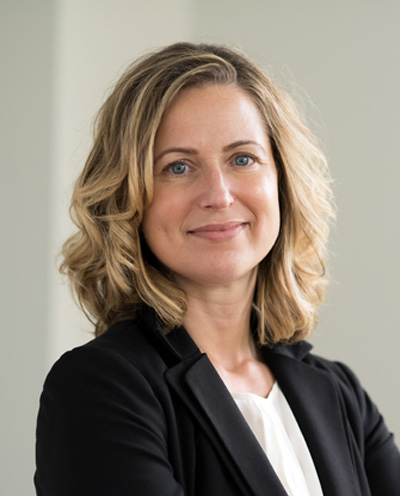 René Russo, PharmD, BCPS
René Russo, PharmD, BCPS Roger J. Pomerantz, M.D., F.A.C.P.
Roger J. Pomerantz, M.D., F.A.C.P. Christine Ann Miller
Christine Ann Miller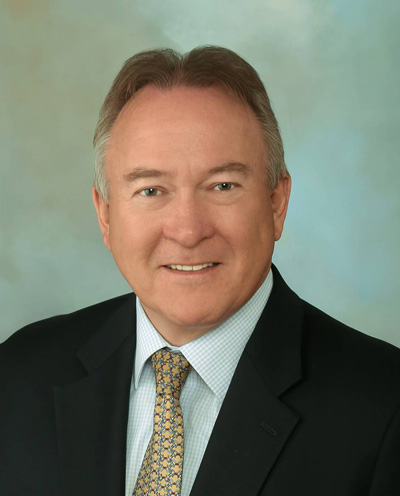 Graham G. Lumsden
Graham G. Lumsden Marco Taglietti, M.D.
Marco Taglietti, M.D. Ankit Mahadevia
Ankit Mahadevia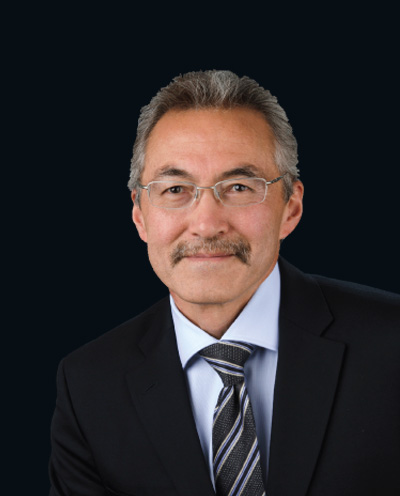 Jeffrey Stein, Ph.D.
Jeffrey Stein, Ph.D. Evan Loh, M.D.
Evan Loh, M.D. Michael Dunne, M.D
Michael Dunne, M.D Ciara Kennedy, Ph.D.
Ciara Kennedy, Ph.D. Ted Schroeder
Ted Schroeder Kevin Finney
Kevin Finney

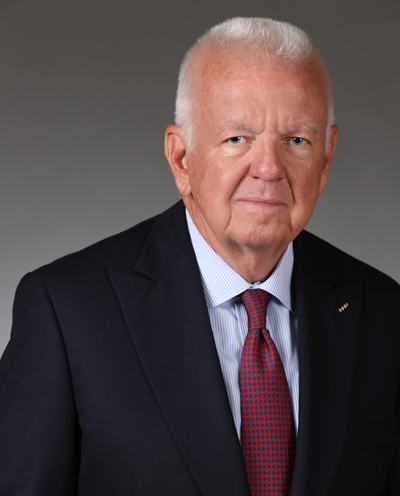 Stephen Conafay
Stephen Conafay Christopher J. Burns, Ph.D.
Christopher J. Burns, Ph.D.

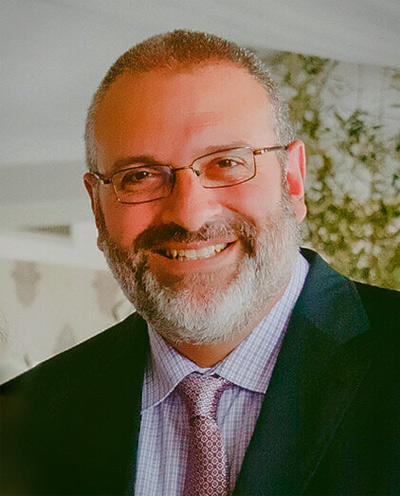 Corey Fishman
Corey Fishman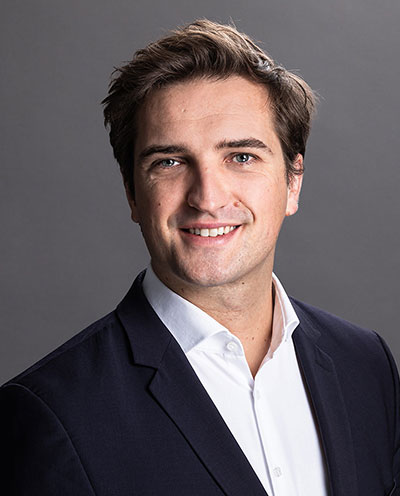 Felix Faupel
Felix Faupel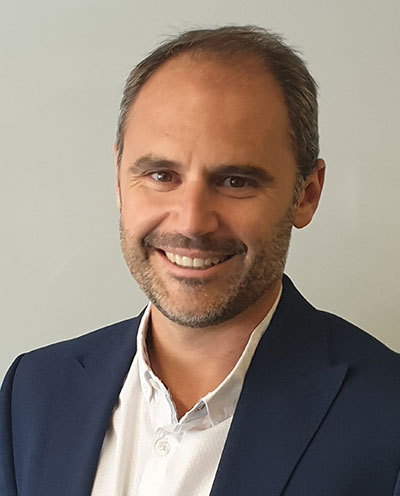 Adrian Nivoliez
Adrian Nivoliez